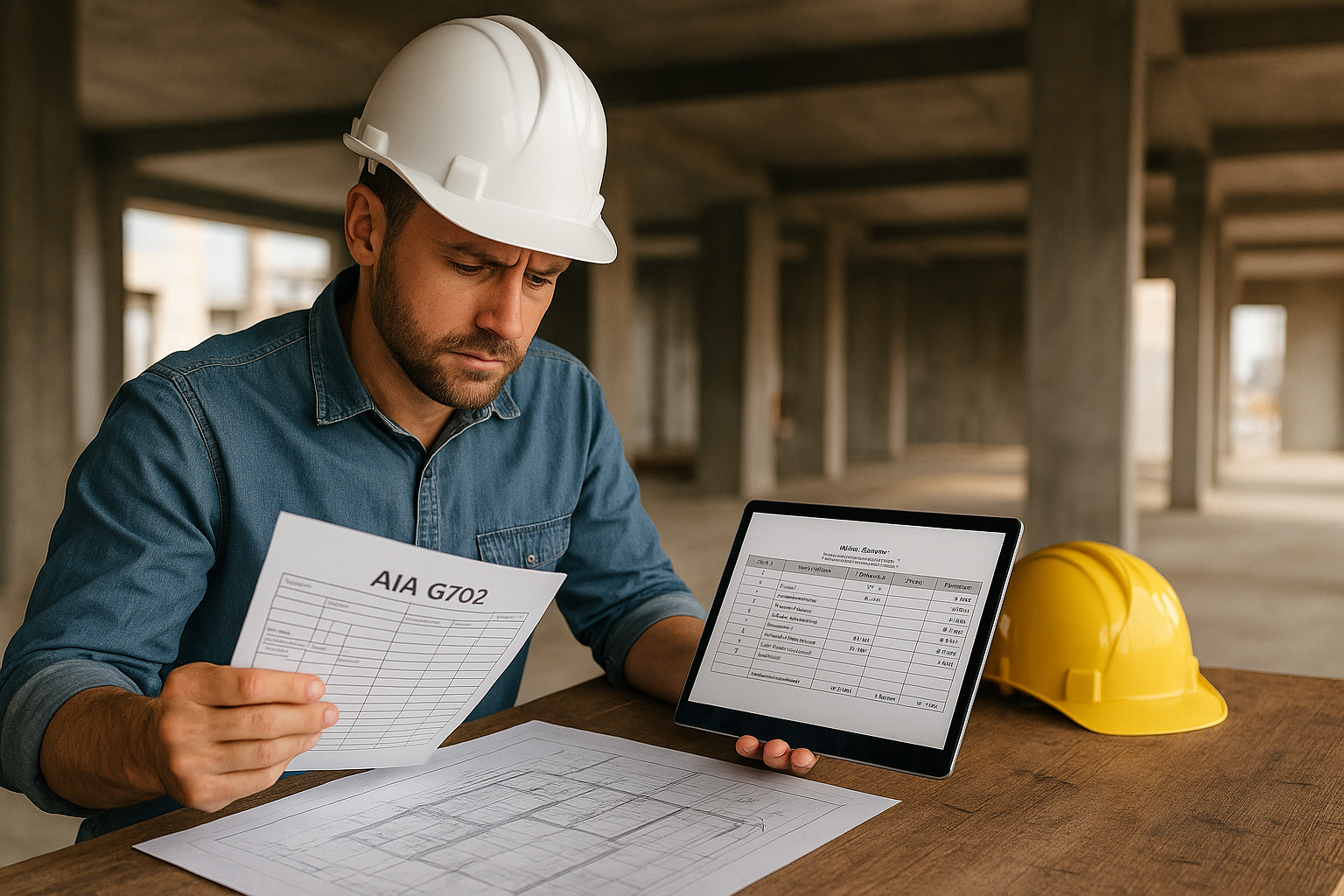Every contractor knows the frustration: you finish the work, submit your Pay App paperwork, and then payments stall because of errors on Pay App forms. The AIA G702 and G703 are the most widely used billing documents in construction — but they’re also complex and confusing.
In this guide, we’ll explain exactly how to fill out AIA G702 and G703 forms step-by-step, highlight common mistakes, and show how PAYearned software simplifies the process to keep your cash flow moving.
What Are the AIA G702 & G703 Forms?
- AIA G702 (Application for Payment): A standardized invoice contractors submit to request payment for completed work.
- AIA G703 (Continuation Sheet): A supporting schedule of values (SOV) that details each task and its percentage of completion.
- Together, they create a transparent record of work completed and payments owed, making them the gold standard for construction billing.
Step 1: Filling Out the AIA G702 Form
- Project & Contractor Info – Enter your name, address, and project details.
- Application Number & Date – Track your billing cycle accurately.
- Original Contract Sum – List the full contract amount.
- Approved Change Orders – Add any approved changes to the contract value.
- Work Completed & Stored Materials – Pull totals from the G703.
- Retainage – Enter withheld amounts (usually 5–10%).
- Total Earned Less Previous Payments – The amount you’re billing this period.
Step 2: Filling Out the AIA G703 Continuation Sheet
- Column A – Item Number → Unique identifier for each task.
- Column B – Description of Work → Align with the scope of work.
- Column C – Scheduled Value → Dollar amount assigned to each line item.
- Columns D–G – Work Completed & Stored Materials → Update each month.
- Column H – Total Completed & Stored to Date → Running cumulative total.
- Column I – % Complete → Indicates project progress.
Common Errors That Delay Payments
- Miscalculations
- Forgetting to list stored materials
- Amounts that don’t match between G702 and G703
- Using outdated templates or Excel files with bad formulas
How PAYearned Simplifies AIA Billing
- Pre-fills contract details
- Syncs project progress automatically
- Calculates correctly and automatically
- Generates submission-ready forms instantly
Frequently Asked Questions About AIA G702 & G703 FormsFAQ
- Q1: What’s the difference between AIA G702 and G703? → G702 is the payment application summary; G703 is the continuation sheet that details the work breakdown.
- Q2: Can I download free AIA G702 and G703 forms? → Yes, but free templates often lead to mistakes. PAYearned ensures accuracy and saves time.
- Q3: How much retainage should I list? → Retainage is typically 5–10%, depending on your contract. PAYearned calculates this automatically.
- Q4: Do all owners require AIA forms? → Not all, but many architects and owners prefer AIA forms because of their clarity and standardization.
- Q5: What’s the easiest way to complete AIA billing forms? → The simplest way is using a tool like PAYearned that eliminates manual entry.
Conclusion & Call to Action
The AIA G702 and G703 are critical for securing progress payments, but mistakes can cost contractors time and money. Don’t let paperwork stall your cash flow.
👉 Try 30 days Risk Free with PAYearned today and simplify your billing process!
👷Contractor? PAYearned thinks you should know this!
🔗 Connect on LinkedIn
📘 Follow us on Facebook
🎥 Subscribe on YouTube
⭐ Leave Us a Review on Google
PAYearned software is an independent product and has not been developed, endorsed, or approved by the American Institute of Architects (AIA) or ACD Operations, LLC.
